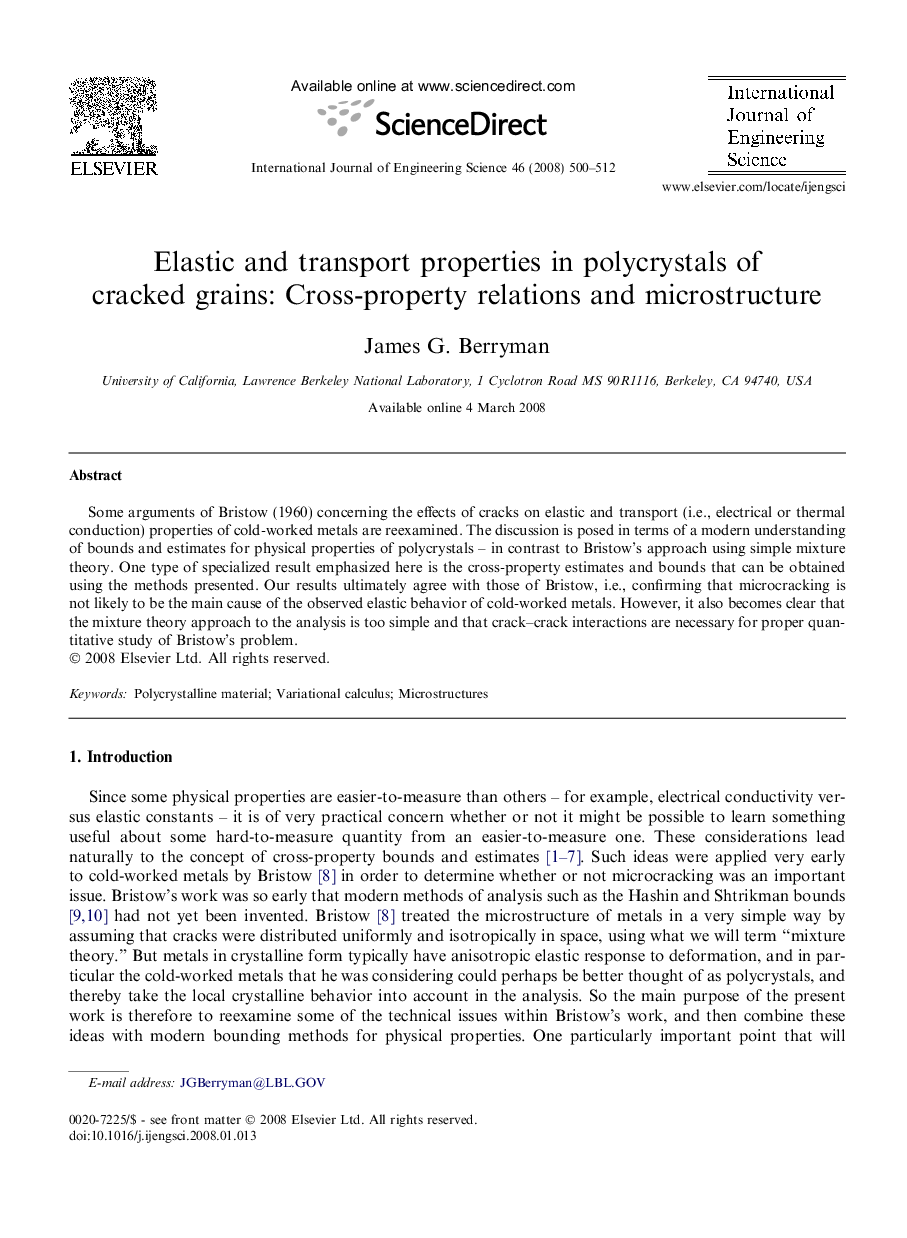| Article ID | Journal | Published Year | Pages | File Type |
|---|---|---|---|---|
| 825486 | International Journal of Engineering Science | 2008 | 13 Pages |
Abstract
Some arguments of Bristow (1960) concerning the effects of cracks on elastic and transport (i.e., electrical or thermal conduction) properties of cold-worked metals are reexamined. The discussion is posed in terms of a modern understanding of bounds and estimates for physical properties of polycrystals - in contrast to Bristow's approach using simple mixture theory. One type of specialized result emphasized here is the cross-property estimates and bounds that can be obtained using the methods presented. Our results ultimately agree with those of Bristow, i.e., confirming that microcracking is not likely to be the main cause of the observed elastic behavior of cold-worked metals. However, it also becomes clear that the mixture theory approach to the analysis is too simple and that crack-crack interactions are necessary for proper quantitative study of Bristow's problem.
Related Topics
Physical Sciences and Engineering
Engineering
Engineering (General)
Authors
James G. Berryman,
